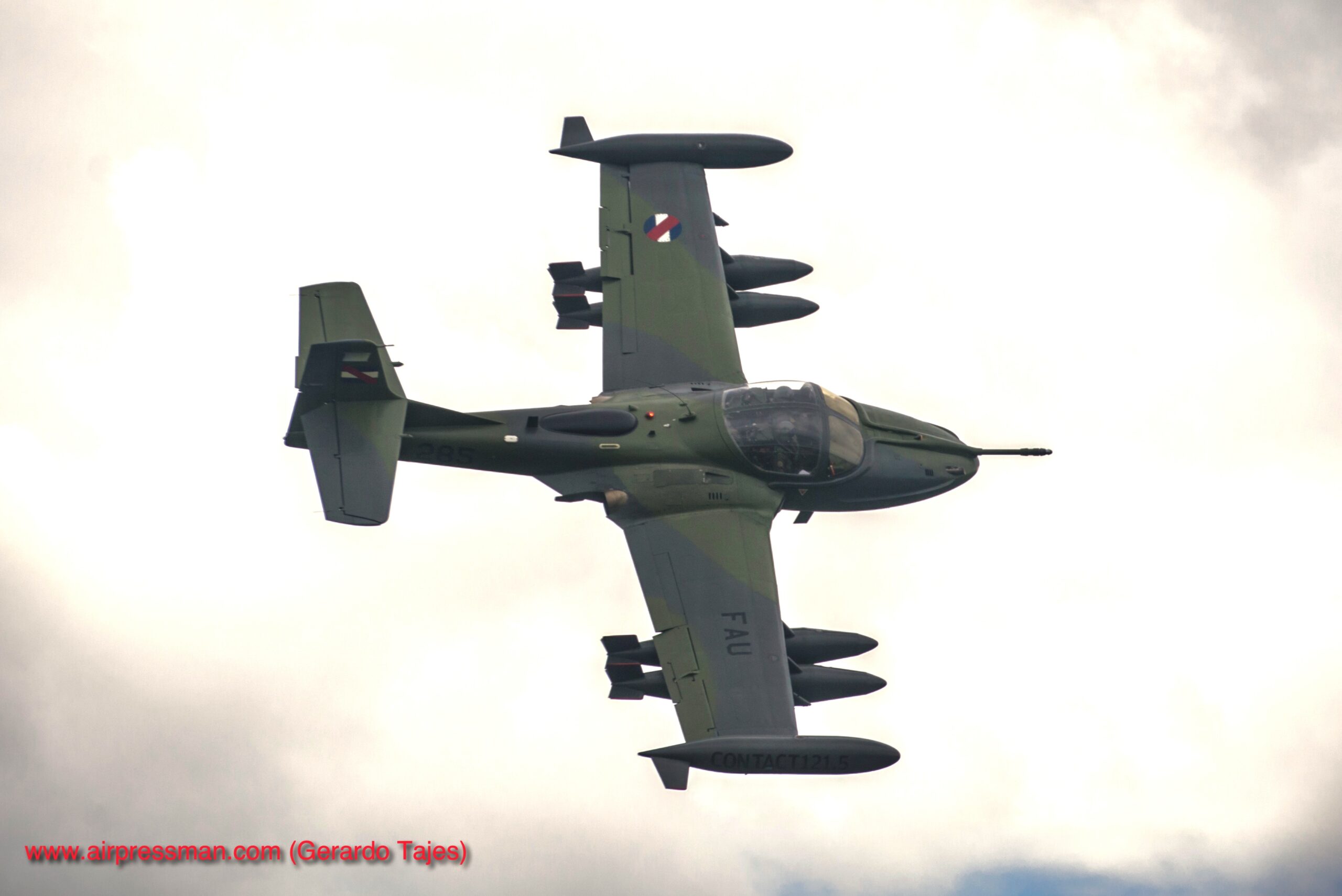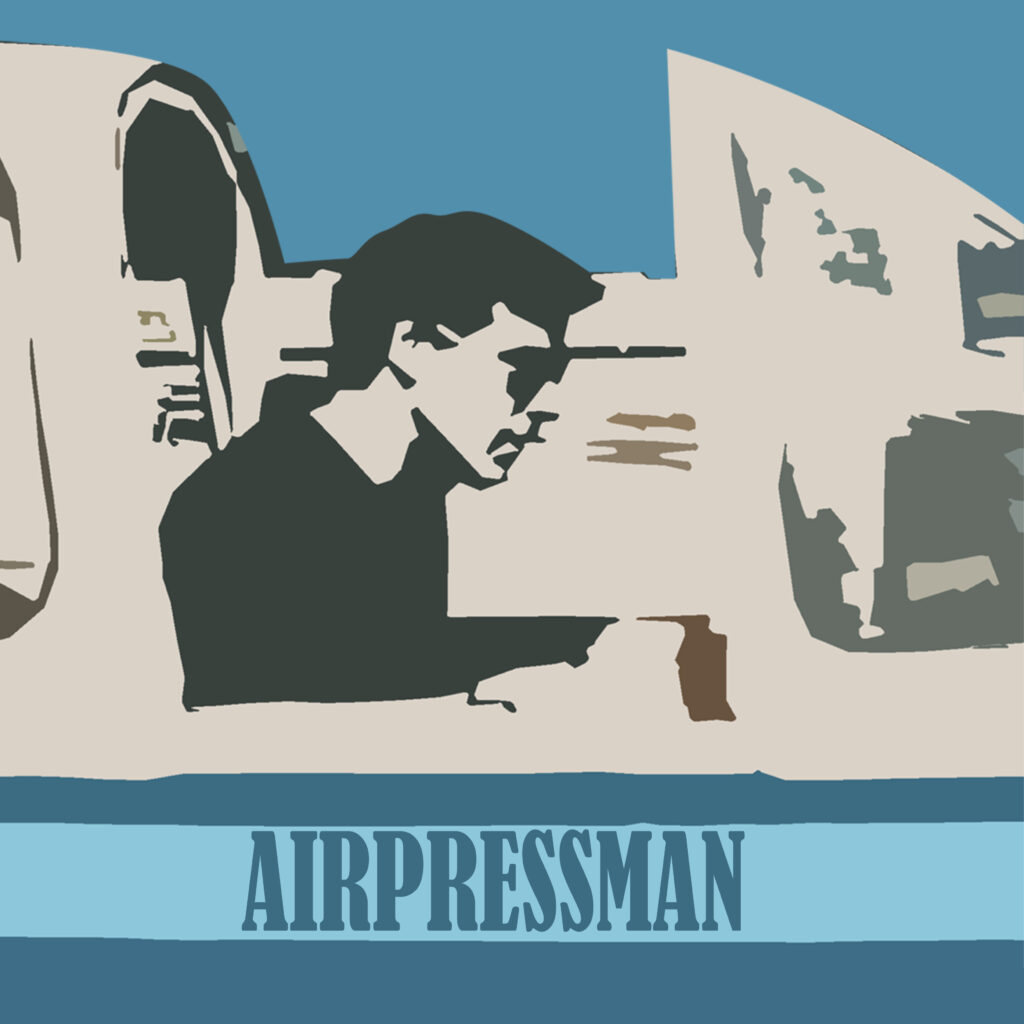
The Fuerza Aérea Uruguaya (Uruguayan Air Force-FAU) selected in 2017 the Martin-Baker Aircraft Co. Ltd. ejection seat model Mk-8LD to equip its fleet of ageing Cessna A-37B Dragonfly attack jets. Much has been said on this site about these veteran aircraft and the need for their replacement. As a “stop gap” measure, the FAU is extending the life of these old Vietnam era warriors, by replacing their ejection seats. Here’s a description of how and why it all happened.
Right: The Martin Baker Mk-8LD (Martin Baker)
For more Dragonfly details follow these links: A-37B ROAD DEPLOYMENT: “Highwaymen” & A-37B “Dragonfly” – Post Maintenance Fly Test


Twelve seats were ordered and installed on six of the two seater (side-by-side) Dragonfly belonging to the Escuadrón Aéreo No. 2 – Caza (Air Squadron No. 2 – Fighters) based on the Brigada Aérea No. 2 (Air Brigade No. 2) Tte. Mario Walter Parallada at Durazno, located 100 miles (188 km) north of the capital, Montevideo. The new seats are designated as MK-UY8LD, following the British manufacturer’s custom of placing a two letter acronym of the client country in front of the seat model number, will replace the old Weber US built ejection seats. Due to the obsolescence of the propellant and explosive components of the current seats, as well as the absence of companies that have the certification and reliability to manufacture them ; the FAU created the Investment Project No. 798 for the repair and update of their combat aircraft. Furthermore as the fleets of aircraft utilising the Weber seats subside the process to obtain spares becomes more cumbersome as well as expensive, even under the US Foreign Military Sales (FMS) system.
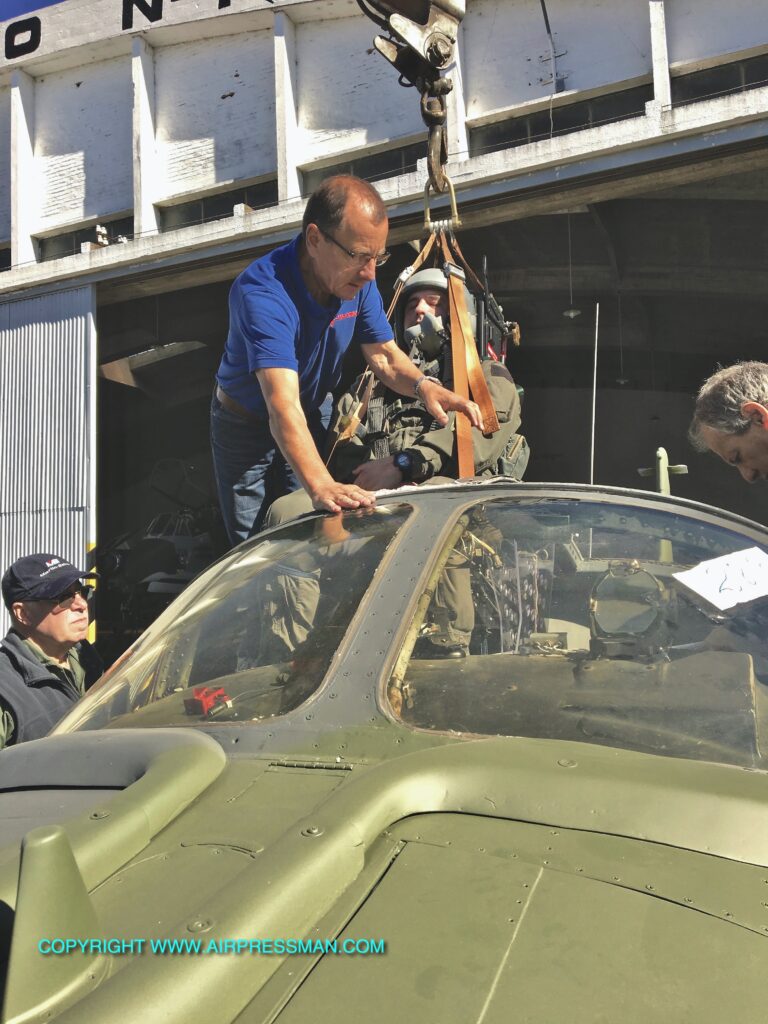
Negotiations began in March 2017 when FAU personnel visited the company MBA SA (representative and distributor of Martin-Baker in Argentina) and its Integral Maintenance Workshop located at the Las Higueras airport east of the city of RÍo IV, 102 miles (185 km) south of the city of Córdoba, Córdoba Province, Argentina. This workshop certified by Martin-Baker in 2010 as their first “Centre of Excellence” in the world, is located within the maintenance facilities of the Área Material Río IV of the Fuerza Aérea Argentina (Argentine Air Force-FAA). Here the company assists its clients – armed forces of Latin America and Africa – with preventive maintenance, repairs, calibration of test benches, equipment tours and training courses.
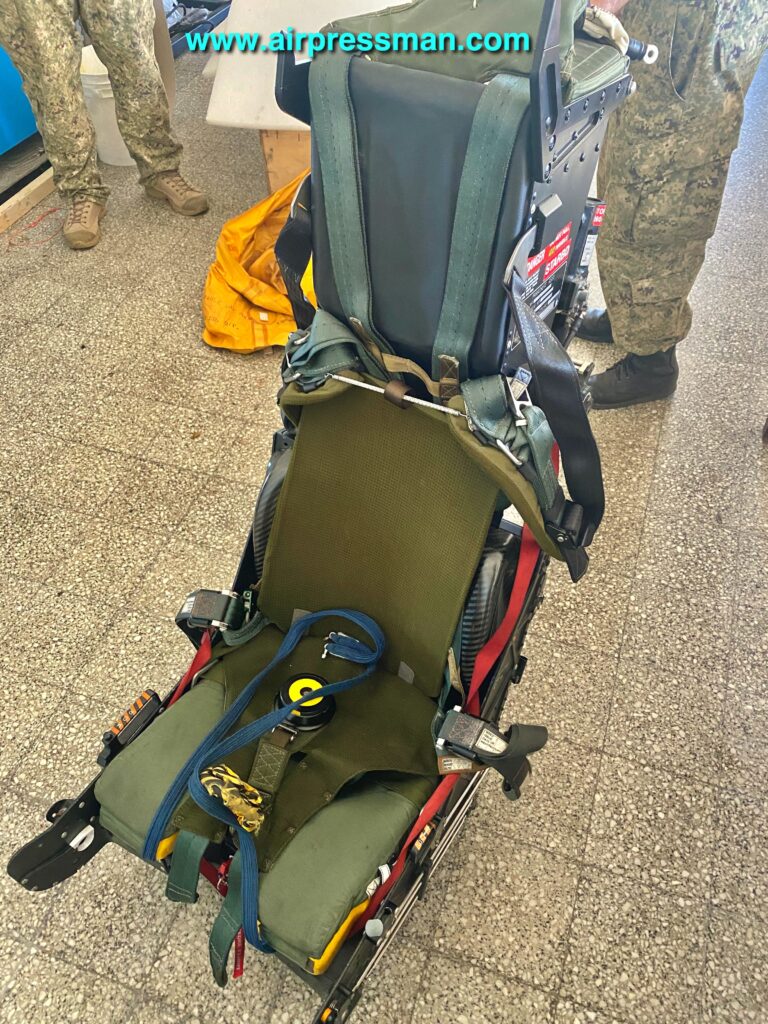
In March 2017, an installation test was completed on a FAU A-37B aircraft in Durazno at a cost of £165.000 (US $225.000). Three Argentine technicians, one British and one Italian from the firm were present. The test analysed cockpit measurements, possible seat anchor areas and potential obstacles in the interior of the aircraft, study of anthropometry range – analysis of the movements of the human body inside the aircraft to obtain ergonomic data – lateral distances (elbow-to-elbow of both occupants) as well as the possible weight range of each of them (indicated as a minimum of 78 kg and a maximum of 116 kg for the MK-8) reaching the conclusion that the seat could be successfully installed. The MK-8L is a lightweight version of the MK-10L (the latter being the seat with more units sold by Martin-Baker) and installed in the majority of Argentine built FAdeA IA-63 Pampa III of the FAA via a standardisation process carried out since 2005 – as the first Pampas assigned to the Centro de Evaluación de Vuelo (Flight Evaluation Center-CEV) had the MK-8 installed.

In March 2017, an installation test was completed on a FAU A-37B aircraft in Durazno at a cost of £165.000 (US $225.000). Three Argentine technicians, one British and one Italian from the firm were present.

The acquisition was approved by the Uruguayan government in November 2017, authorising the Ministry of Economy and Finance to make a Direct Purchase (Resolution No. 17.05965-6) signed on December 28 of the same year. The total cost of the transaction was for £3.546.672 (US$4.792.800) to be paid in three instalments until 2019.
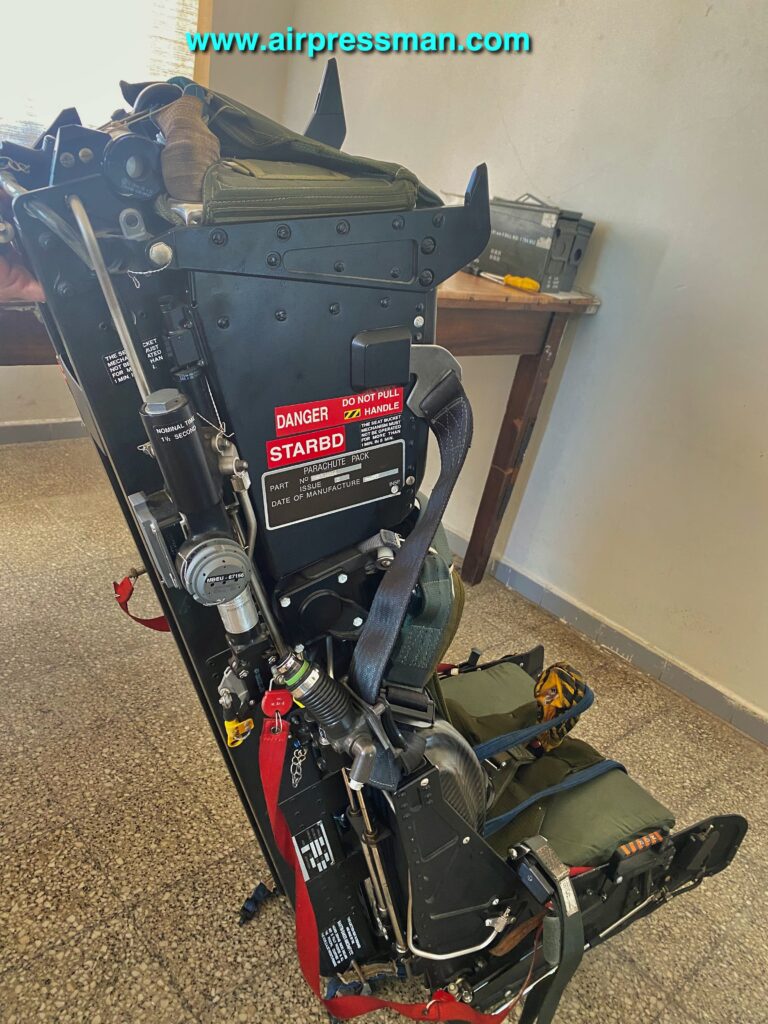
Martin-Baker, which absorbs 96.7% of the western market of ejection seats, has been offering the MK-8L system for some time to replace the old seats on the Cessna T-37 and A-37B fleets of several countries (one T-37 it is flown in the Australian civil registry). Therefore after this sale to Uruguay the firm could thus move forward with potential additional clients in Latin America; such as the Fuerza Aérea del Perú (Peruvian Air Force-FAP), with the recently announced modernisation plan of its A-37B, as well as the possible change of seats that might be needed by the Fuerza Aérea Colombiana (Colombian Air Force – FAC), also for its Dragonfly fleet. Some 580 Mk-8L seats are installed on Embraer EMB-312 Tucano aircraft from 17 countries, including Argentina, Brazil, Paraguay, Iran, Kuwait, France and the United Kingdom; as well as 135 on Chinese built Hongdu K-8 jets, belonging to the Pakistani and Egyptian Air Forces.

The seats for the FAU were built by SICAMB SpA (Società Italiana di Costruzioni Aeronautiche Martin Baker)– Italian company associated with Martin Baker – in its facilities in Latina, Lazio region, near Rome. They arrived at the MBA workshop in Argentina during August 2018 followed by the installation on the Uruguayan aircraft; of easy and expeditious completion. According to MBA sources the fitting of the seats was to be done in Río IV as they have the personnel and rigs, calibrating equipment and tools. This action was to involve the transfer of the Dragonfly in batches to Córboba – approximately three hours flying time with a refuelling stop – from Durazno. To reposition the aircraft to Argentina, was undesirable to the the FAU as it would have been nearly impossible to ensure that all six aircraft to be retrofitted, would be airworthy at the time, not to mention the official requests to authorise combat aircraft from one nation to enter another. Finally the seats were installed in the Brigada II of Durazno during November 2018. FAU 285 (c/n 43275, ex USAF 69-6430 in service since March 18, 1989) & 279 (c/n 43304, ex USAF 70-1289 with the FAU since January 23, 1988) were the first aircraft to be retrofitted; allowing these two aircraft to participate later that month on the multinational CRUZEX air exercise in Brazil. Four other aircraft were completed during May 2019, these being FAU 282 (c/n 43267, ex USAF 69-6422 in service since March 18, 1989), FAU 286, 287 and 288 (ex USAF 73-00/1105, 73-00/1108 and 73-00/1110 operational in Uruguay since December 2014)
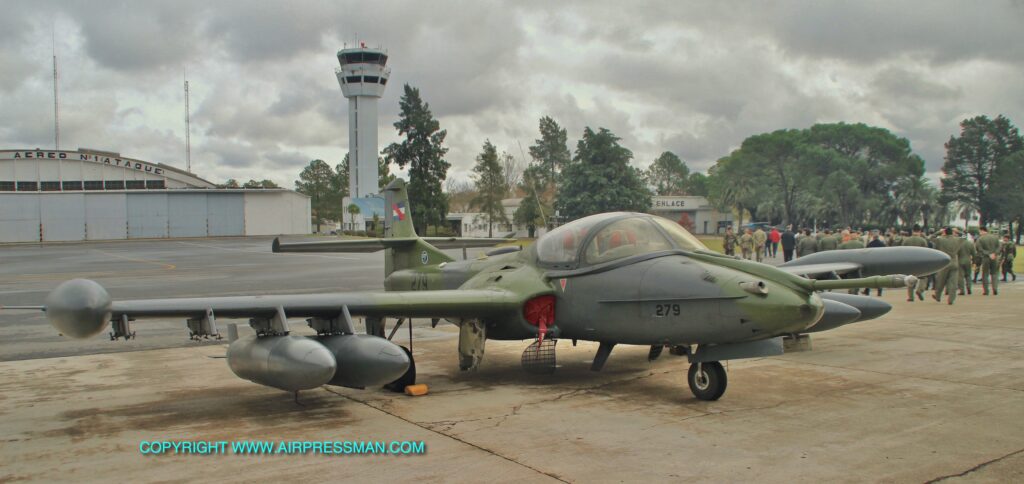

In terms of performance, Martin Baker states that the MK-8 will provide considerable weight savings (the rocket motor was removed), since due to the side-to-side seating arrangement of the A-37B, the rocket could burn the occupants during the ejection. The new seat has a total mass of 317lb (144kg, including a 11lb/5kg survival kit) and provides safer and faster performance.The ejection is initiated by pulling a single loop ejection handle vertically, installed in the seat between the legs of the occupant. Uruguayan crews that have flown the attack turboprop IA-58A Pucará fitted with a MK-6 seat, will remember that this seat – last of Martin Baker’s production line to have an alternative handle – located on the head of the occupant and that in turn unfolded a protective Face Shield during the ejection. Left: Mk-8 fitted on an A-37B (Escuadrón 2)

The MK-8L is an eject through the canopy escape system (the canopy is not launched prior to the ejection), a capability partly motivated by the difficulty of operators of older seats, in obtaining spare pyrotechnics for the canopy. Interestingly the FAU carried out locally a modification using old cartridges still available from the Weber seats, to be able to eject the canopy during ground emergencies, like encountering smoke/fire in the cabin or going off the runway. During the ejection bail out from the aircraft occurs in 0.6 seconds (versus 0.21 seconds of the US-manufactured Weber seat previously installed) after pulling sharply and with your strong hand, the single ejection handle located forward of the seat cushion. If nothing happens, another sharp tug should suffice, however Martin Baker states the seat is designed not to fail! Each occupant ejects independently from each other, since the seat does not have a sequential command system. When the three-stage progressive ignition cartridges are activated, the gases in the cartridges act upon a telescopic cylinder, causing the seat and its occupant to be expelled through the canopy, without rockets!

One of the stages of the cartridges, activates a leg restraint system – in the style of elastic bands – that automatically retracts and holds aft both legs of the occupant, averting their amputation against the instrument panel and diminishing leg fluttering and possible fractures whilst in the air stream away from the jet´s fuselage. Another potential hazard detected on the A-37B is that of its canopy central metal frame (where a metal canopy breaker stands) that could impact against the crew’s shoulders during ejection causing severe trauma or worse. To counteract this circumstance, a transparent fixed vertical screen (called an inter-seat screen) has been installed on the canopy bow, guiding the crew member’s shoulder and body safely out of the aircraft.
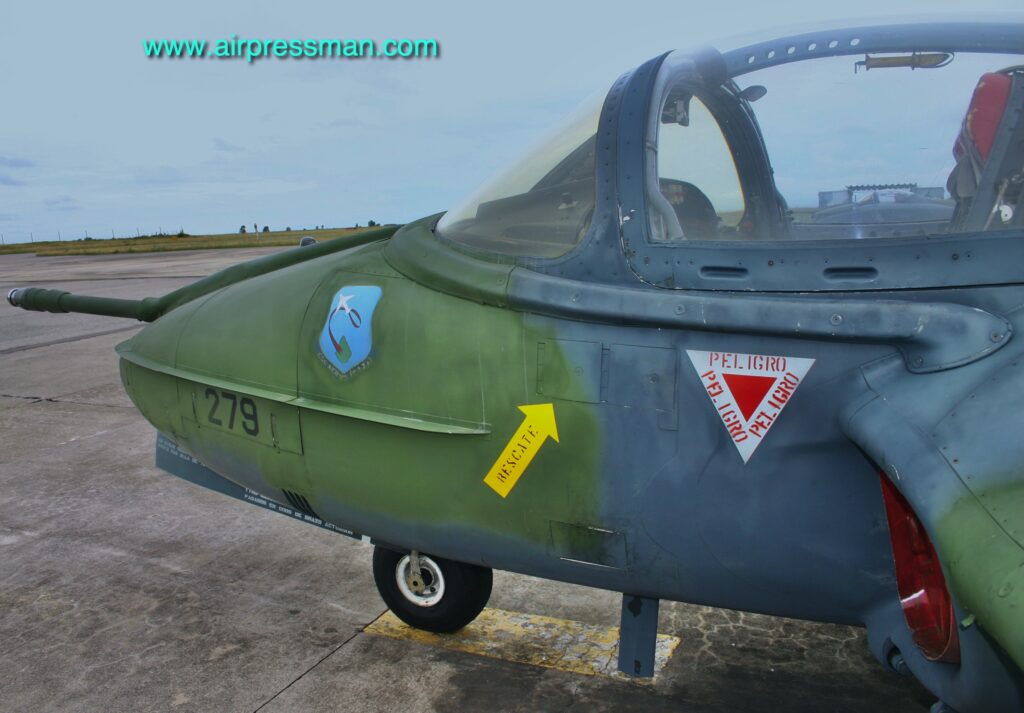
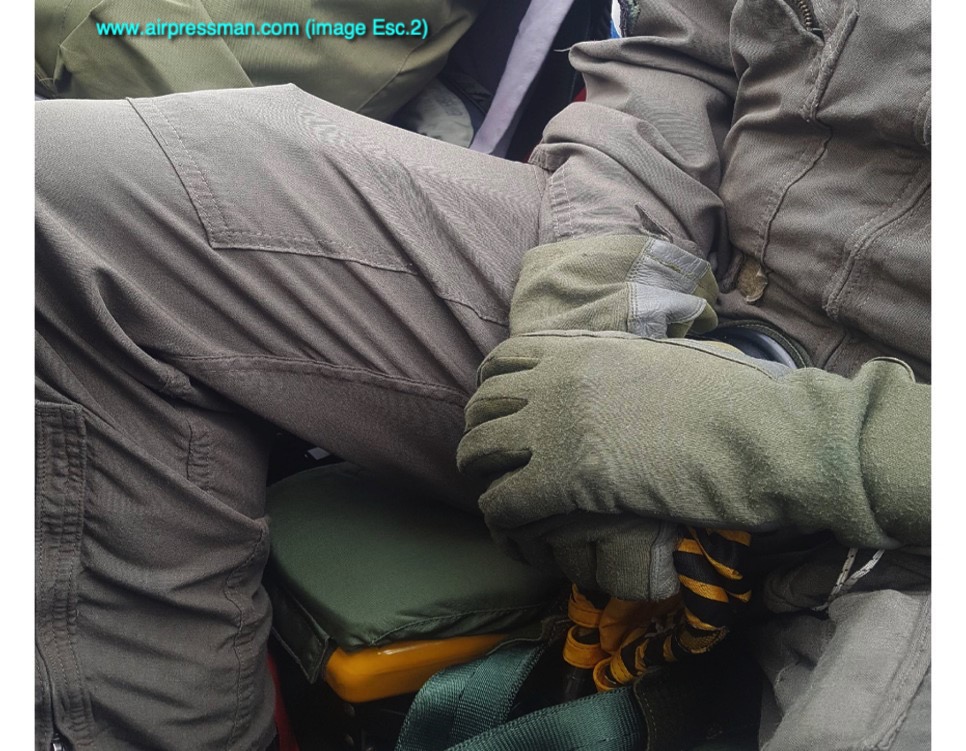
The cockpit bubble plexiglass is then shattered by two sharp metal horns (dome-breaker nails) fitted to the upper part of the seat’s headrest, with no previous separation of the canopy. Inside the headrest the GQ Type 1000 Mk 2 parachute is located thus no reason to wear one, as the dorsal type worn with the Weber seats. The “zero-zero” type (0 height-0 delay) Mk-8L safe ejection envelope is wider and safer than the Weber (requiring faster speeds prior to the activation of the seat ejection cartridges) permitting bailing out successfully at a wide range of speeds, attitudes and altitudes. Successful ejections at zero height and within a speed range of 70 to 439 knots, and at maximum altitude 50,000ft are possible (the service ceiling of the Dragonfly is less than 42,000ft/13,000m). To mention possible Mk-8 safe ejection envelope examples – indicated by Martin Baker – would be with the jet flying at 100 knots, 180° bank angle and 300 ft AGL or the most extreme and critical condition being at 425 knots and 90° dive, with only 1200 ft height needed to survive. it is obvious that Martin Baker with its vast product line and experience has done its homework well. A major concern with regards to aircrew flight safety has always been the secure egress from a dying aircraft, within a critical scenario where it is flying low, in an adverse flying attitude and a high rate of sink, in a nutshell, the box where most fatalities do occur after an ejection. It is good to know that to date, the manufacturer states that there has been 40 ejections from a Mk-8 ejection seat.
The 17ft (5.2m) parachute silk dome is in four colours – white, green, red and yellow (useful in case of ejection in snowy areas, little contrast or desert). Its deployment is assisted by a 5ft (1.5m) drogue, a small conoidal parachute that decelerates and stabilises the main chute. At the same time, a Barometric Time Release Unit (BTRU) ensures that the parachute does not deploy above 14.500ft (useful in high altitude ejections, where extreme cold and lack of oxygen, could disable the pilot during a slow fall to the ground) or until the G force and speed is not reduced to a previously anticipated limit, usually + 2.5G to avoid injuries to the ejectee. (Right: ejection simulation on a MB seat. RAF Museum, London. Image Ernesto Blanco Calcagno)
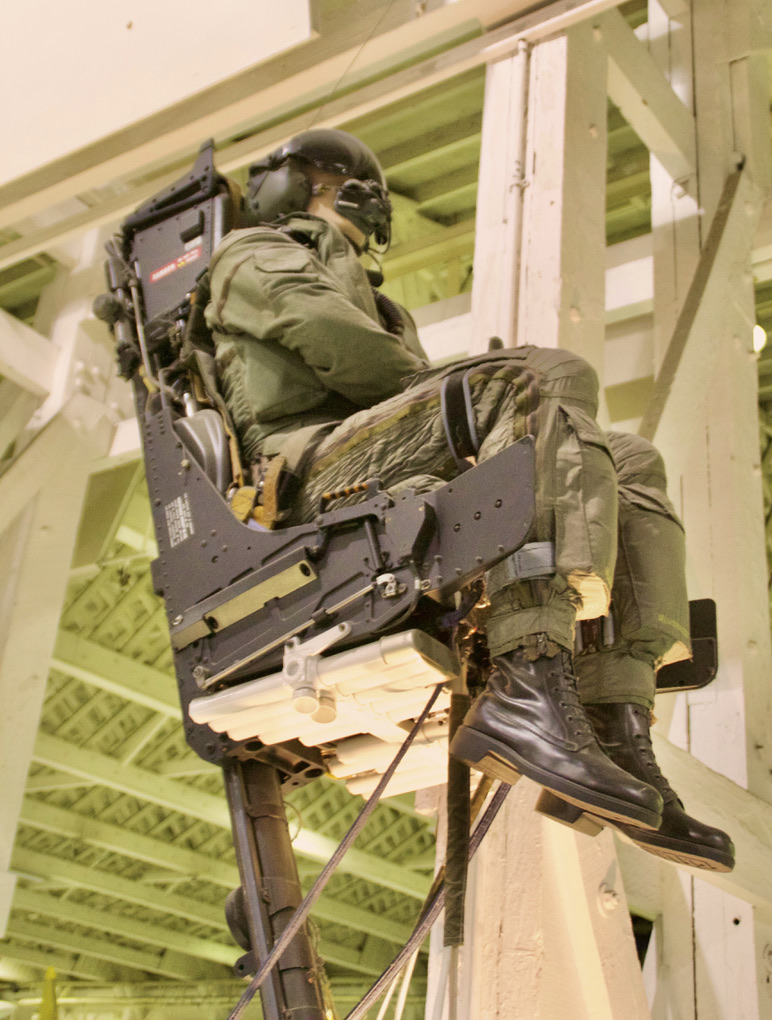
The Mk-8L has a container in its base, where a Personal Survival Pack (PSP) of 11lb (5kg) maximum weight is located. Amongst other items like a heliograph, it holds an inflatable dinghy – after the ejection the survival kit would hang about 5ft (1.5m) below the pilot – and if landing on water a sharp tug would suffice to inflate this personal flotation device. An option exists to add to the seat an emergency gaseous oxygen tank (a 70 lit tank guarantees 10 min of oxygen), not fitted on the FAU seats. PSP needs may differ when performing A-37B deployments or long-duration ferry flights to different geographical areas, as the Dragonfly regularly participate in multinational air exercises such as CRUZEX in Brazil, SALITRE in Chile or CEIBO in Argentina.
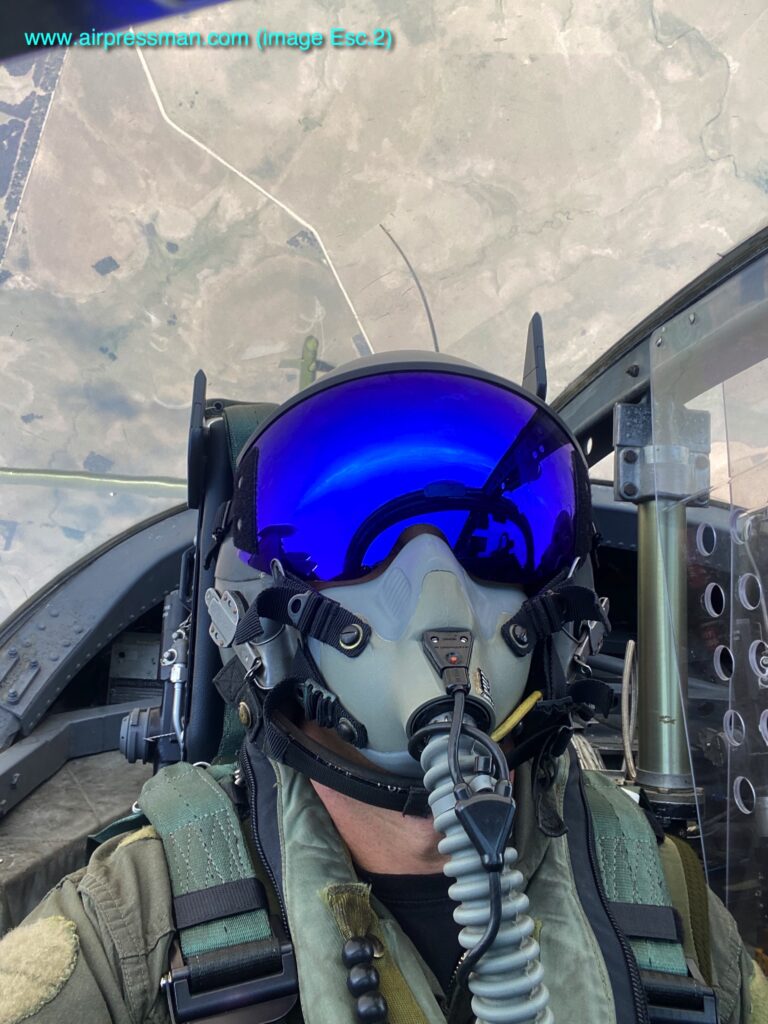

The installation of the new seats is a provisional measure to prolong the life cycle of these venerable airplanes. Otherwise they would have to be removed from service, as the cartridges and the Weber seat are no longer manufactured; making the procurement of spare parts virtually impossible. Martin Baker ensures the source of spare parts for the MK-8L, as well as their maintenance – to be held in Rio IV – during the Visita Periódica/VP (Periodic Visit) necessary every two years (VP2 at two years, VP4 at four years until the General Review at 12 years of service). By then we hope that the FAU possesses a new combat aircraft. It should be noted that the FAU has a long experience with the Martin-Baker products, due to the installation of the MK-6 model in the Pucará aircraft.
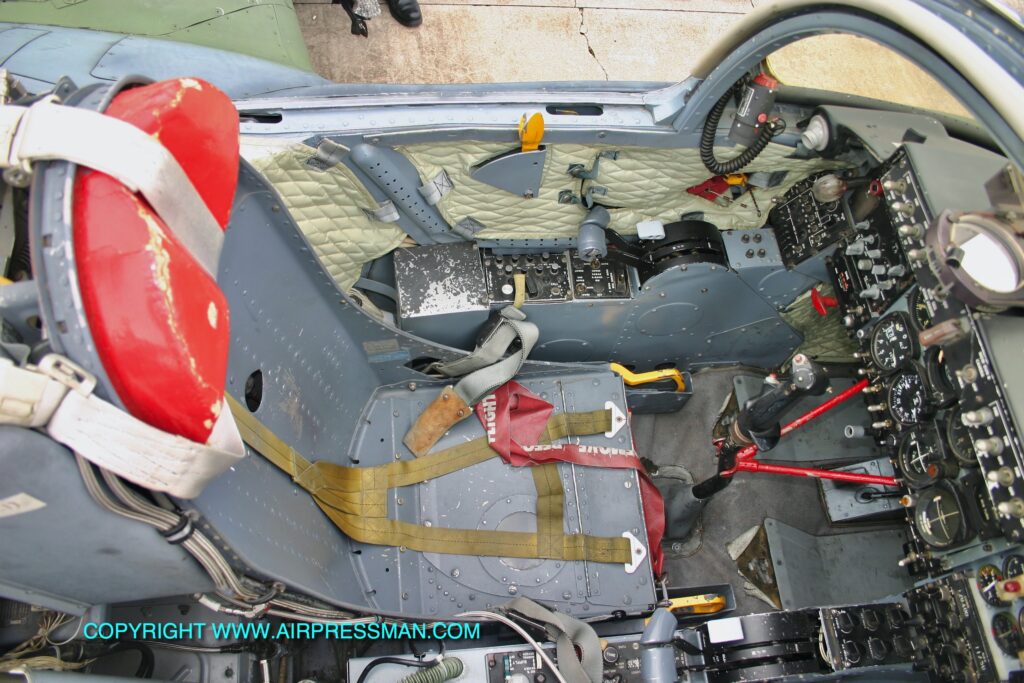
It is regrettable that the A-37B, being the main combat vector of the FAU, only two or three of them are airworthy at one time. Erroneously called fighters – they are observation/attack jets – the first batch of eight brand new jets obtained in 1976 and flown by FAU pilots and maintenance technicians from Wichita, Kansas to Uruguay. Six aircraft and nine crew members have been lost in accidents – the last one in August 2016. Replacement units were incorporated in 1988 and 1990 (from stocks of the USAF and the National Air Guard) and three more in 2014 – along with eight General Electric J-85-17A spare engines – obtained from the Fuerza Aérea Ecuatoriana (Ecuadorian Air Force – FAE) in exchange for theoretical staff courses dictated by the FAU to their Ecuadorian comrades.
Uruguay officially deactivated its last Pucará attack turboprop in March 17, 2017 (from October of 2016 to March of 2017, a single aircraft – FAU 227 – was operational) due to the difficulty of obtaining spare parts from these aircraft, which fulfilled an excellent service to the country since mid-1981. They have not been replaced – and the Escuadrón Aéreo No. 1 – Ataque (Air Squadron No. 1 – Attack) to which the aircraft belonged, has been disbanded, losing the attack capabilities of an optimal aircraft to operate from remote locations in Uruguay and of recent fame of interceptor of illicit flights. A few – out of a total of five – Swiss-made Pilatus PC-7U single-engine turboprop aircraft, operating with the Escuadrón Aéreo Avanzado – EVA (Advanced Flight Squadron – AFS), remain flying on a dual role, as advance trainers and armed missions; equipped with rocket launchers and machine gun pods.

With this meagre fleet – all of them based on the Durazno – the skies of the Homeland are defended. Previous Uruguayan national government neglected defence matters, not allocating of funds or resources for the sector of the state committed to defending national sovereignty. Despite the great tenacity put by all the members of the nation’s armed forces (special mention to the FAU technicians and maintenance staff) the constant deterioration of its material resources no longer cannot be hidden nor sustained. Resources needed for carrying out the stipulated defence related missions and to uphold national jurisdiction are promptly needed, hopefully making the imperious and inescapable transition thus elevating the Uruguayan Air Force, finally to the twenty-first century.

Our thanks to the following FAU personnel for their kind assistance in the preparation of this feature: Cnel. Julio Bardesio, Lt. Cnel. Marcelo Lorenze and Gerardo Tajes, Major Eduardo Lepere and 1st. Lt. Joaquín Cabrera.
Below: Front cover of "Avion Revue Latinoamérica" (no. 218 by Key Publishing Spain) and first page of the feature "Más vida para los A-37B de la FAU" (More life to the FAU´s A-37B). The article is similar to the one printed in our web site. Copyright
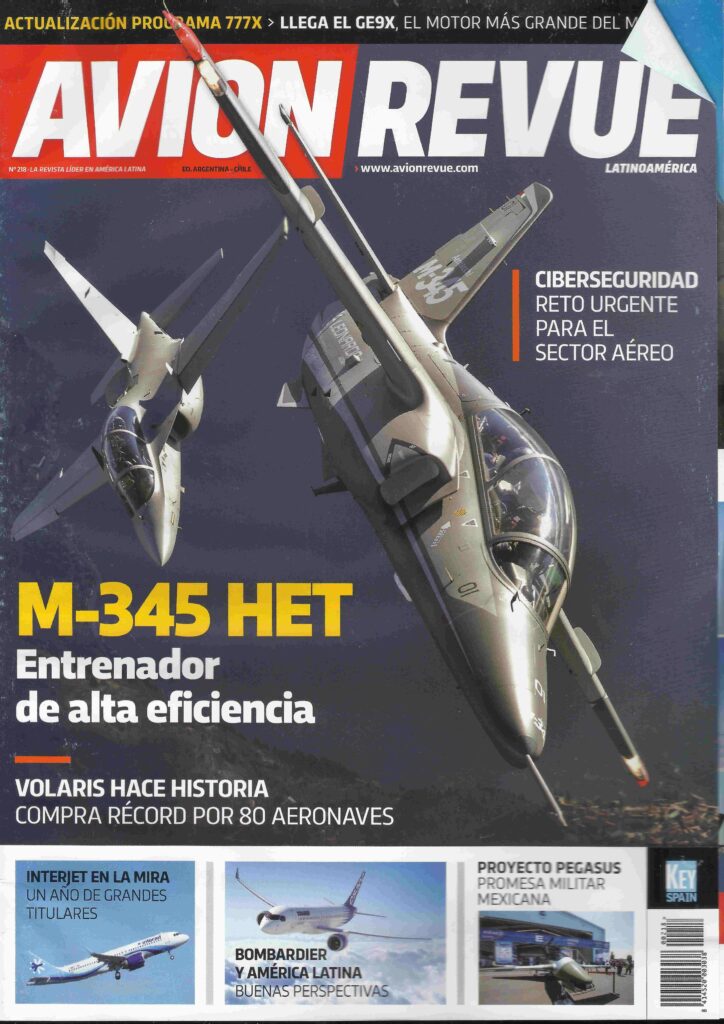
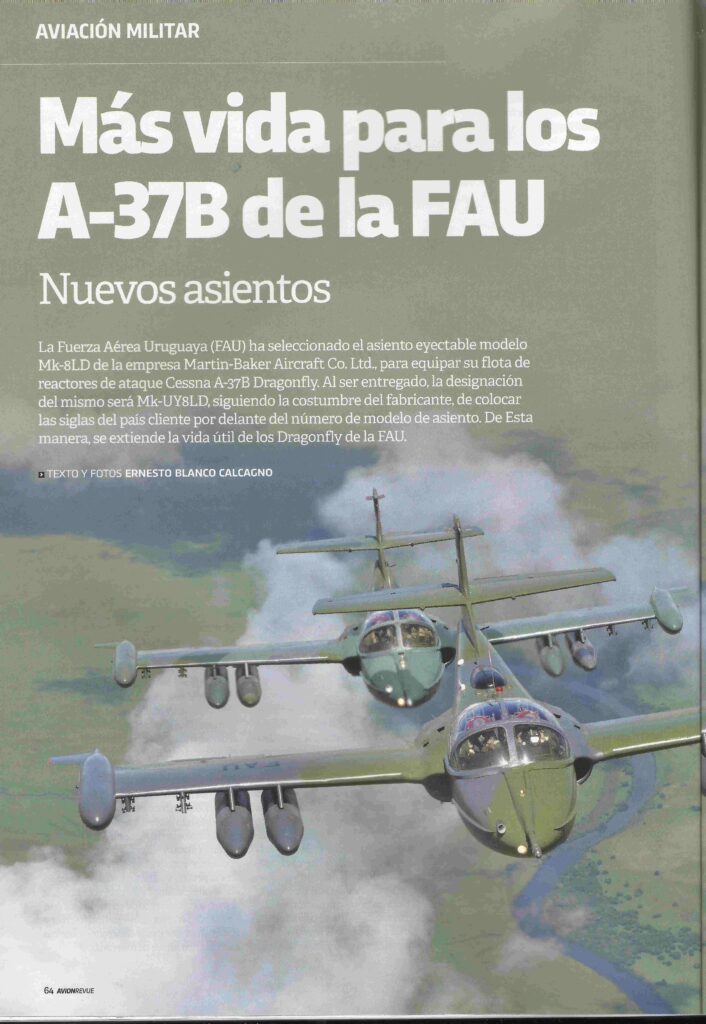

.png)
.png)

